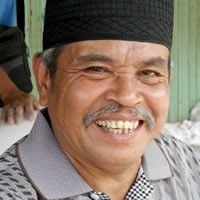Penghulu in Indonesia

Photo Source:
Copyrighted © 2026
International Mission Board-SBC - Jacob Talley All rights reserved. Used with permission |
Send Joshua Project a map of this people group.
|
| People Name: | Penghulu |
| Country: | Indonesia |
| 10/40 Window: | Yes |
| Population: | 29,000 |
| World Population: | 29,000 |
| Primary Language: | Minangkabau |
| Primary Religion: | Islam |
| Christian Adherents: | 0.11 % |
| Evangelicals: | 0.11 % |
| Scripture: | Complete Bible |
| Ministry Resources: | Yes |
| Jesus Film: | Yes |
| Audio Recordings: | Yes |
| People Cluster: | Melayu of Sumatra |
| Affinity Bloc: | Malay Peoples |
| Progress Level: |
|
Introduction / History
The Penghulu tribe is one of the ethnic groups regarded as original inhabitants of the Jambi Province in Sumatra. They live in the Sarolangun Bangko regency, mainly in the Batang Asai, Ulu Tabir and Sungaimanau subdistricts. Some also live in the Bungo Tebo regency. It is thought that this group came from West Sumatra to Jambi in the 15th century. They came as gold seekers. They are believed to be part of the "Old Malays" due to their physical characteristics. On the whole, they tend to be shorter than other ethnic groups in the area, who belong to the "Recent Malay" ethnic groups. In accordance with the area they came from, their language is a mixture of the Minangkabau language and the Jambi Malay language.
What Are Their Lives Like?
Their main livelihood is cultivating rice paddies and non-irrigated fields. Besides planting rice, they also cultivate rubber, cinnamon and coffee. Some of the people have developed a livelihood by traditional gold mining. The main gold mining activity is around the Sungaimanau and Batang Asai areas. Other means of livelihood include gathering forest products, like wood and rattan. They also produce woven handicrafts consisting of balls, floor mats, baskets, bowls and winnowing trays. Additionally, the Penghulu also make metalwork handicrafts such as knives, axes, cleavers and adzes. One tradition important to the Penghulu is co-op group work, for example fellow villagers will help prepare or work a rice field at planting or harvest time. This kind of work involves almost every member of the village. Penghulu settlements are typically clustered along a road or riverbank. Homes are built very close together. In times past, these villages formed a tightknit community called a "marga". A marga was led by the village chief. The nuclear family is called a "kalbu". Many kalbu joined together form a clan, which is led by a Tua Tengganai (clan elder). A Tua Tengganai has the responsibility to supervise the members of his clan and resolve problems that arise among the clan members. The Penghulu are led by a board of elders (ninik mamak) with representatives from each extended family.
What Are Their Beliefs?
Though in general the Penghulu are Muslims, they still cling to traditional animistic beliefs for everyday life. They believe that strong spirits inhabit sacred sites. Some are still in the habit of giving offerings to appease the spirits. Many people seek help from the shaman for daily needs like treating the sick or casting out evil spirits.
What Are Their Needs?
The Penghulu need help in becoming better equipped to develop their natural resources (forestry as well as gold mining) so that the products can be processed in a way that yields the best balance of financial profit and social welfare. They also need capital to increase their agricultural yields. Educationally, the Penghulu need to increase their skills to support development of their area.